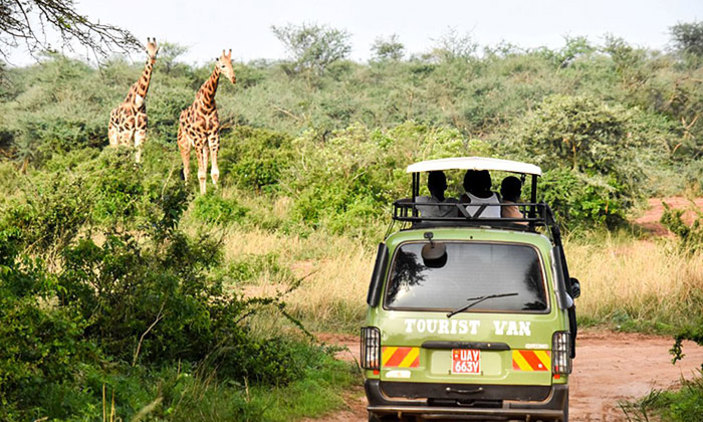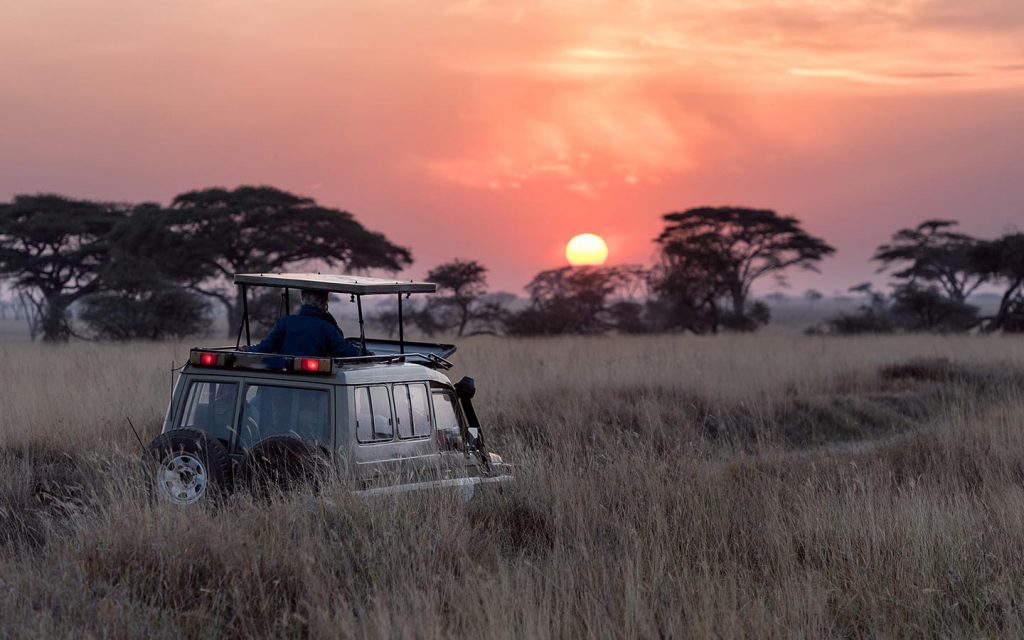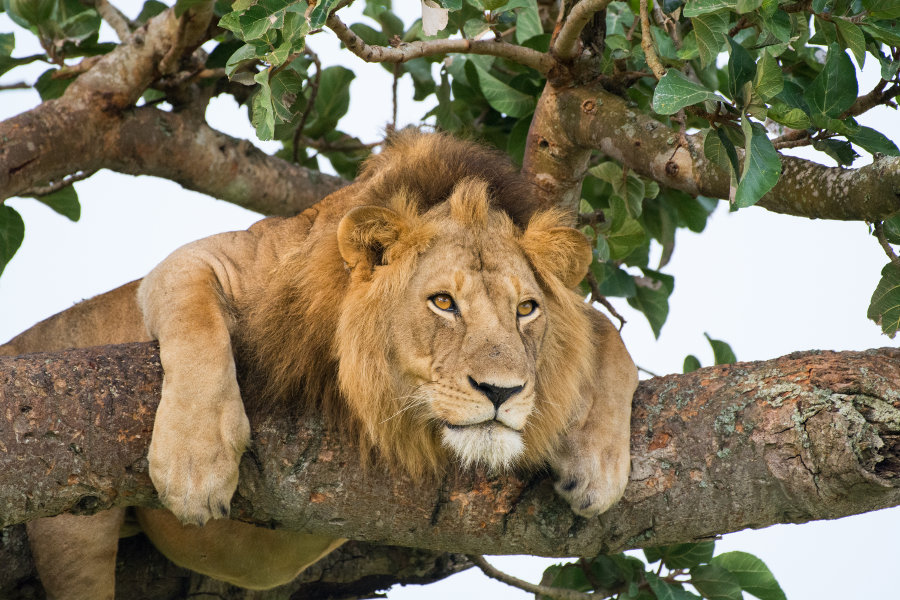
The Best Parks & Timing For Big Five Safaris In Uganda
Uganda’s reputation as the “Pearl of Africa” extends far beyond its stunning landscapes and friendly people. The country offers some of East Africa’s most rewarding Big Five safari experiences, combining accessible wildlife viewing with fewer crowds than traditional safari destinations. While completing the Big Five checklist in Uganda requires strategic planning and realistic expectations, the rewards include intimate wildlife encounters and diverse ecosystems that showcase Africa’s natural heritage at its finest.
Understanding where and when to find lions, leopards, elephants, buffalo, and rhinos in Uganda will transform your safari from a hopeful adventure into a successful wildlife expedition. Each of the Big Five requires different strategies, timing, and locations, making comprehensive planning essential for safari success.
Understanding Uganda’s Big Five Landscape
Uganda’s Big Five distribution differs significantly from classic East African safari destinations like the Serengeti or Masai Mara. The country’s diverse ecosystems, from savanna grasslands to dense forests, create unique viewing opportunities and challenges. Unlike Kenya or Tanzania, where the Big Five roam vast open plains, Uganda’s wildlife experiences often occur in more intimate settings with varied terrain.
The country’s conservation success stories, particularly with rhino reintroduction and mountain gorilla protection, demonstrate Uganda’s commitment to wildlife preservation. However, certain species remain more challenging to encounter than others, requiring patience, local expertise, and strategic timing.
Queen Elizabeth National Park: The Big Five Hub
Queen Elizabeth National Park stands as Uganda’s premier Big Five destination, offering the highest probability of multiple species encounters during a single visit. Spanning 1,978 square kilometers, the park’s diverse habitats support healthy populations of four of the Big Five, with recent leopard sightings adding excitement to game drives.
Lions: The Ishasha Tree-Climbers
Queen Elizabeth’s southern Ishasha sector hosts one of Africa’s most unique lion populations. These tree-climbing lions spend considerable time resting in fig trees, creating extraordinary photography opportunities and memorable encounters. The behavior exhibited by only two lion populations worldwide makes Ishasha a mandatory stop for serious safari enthusiasts.
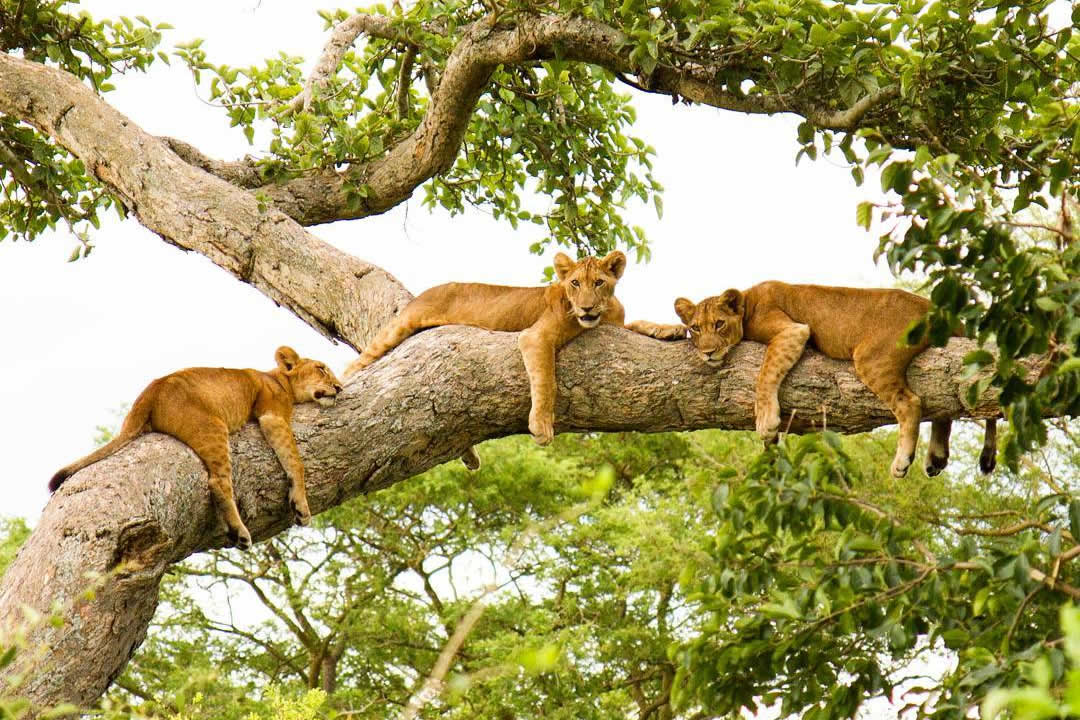
Best Timing for Lions:
- Dry Season (June-September & December-February): Lions remain closer to permanent water sources, making them easier to locate
- Early Morning (6:00-9:00 AM): Active hunting period and tree-climbing behavior
- Late Afternoon (4:00-6:30 PM): Evening activity and territorial behaviors
- Midday (11:00 AM-2:00 PM): Tree-resting behavior peak in Ishasha
Elephants: Kasenyi Plains Herds
The northern Kasenyi sector provides excellent elephant viewing opportunities. Large herds frequent the savanna plains, particularly during dry seasons when they concentrate around water sources. The open terrain offers unobstructed viewing and photography opportunities.
Best Timing for Elephants:
- Dry Season (June-September): Herds concentrate around Kazinga Channel and permanent water
- Early Morning & Late Afternoon: Active feeding and movement periods
- Channel Area: Year-round reliability near water sources
Buffalo: Abundant Throughout
Cape buffalo represent Uganda’s most reliably encountered Big Five species. Large herds roam throughout Queen Elizabeth, with concentrations varying seasonally. The Mweya Peninsula and Kasenyi Plains offer consistent buffalo viewing opportunities.
Best Timing for Buffalo:
- Year-Round Availability: Most consistent Big Five species
- Dry Season: Larger herd formations and predictable movements
- Water Sources: Reliable viewing near channels and lakes
Leopards: The Elusive Challenge
Leopard sightings in Queen Elizabeth remain uncommon but not impossible. Recent increase in sightings, particularly in the Kyambura Gorge area and thick vegetation zones, offers hope for patient safari-goers. Night drives, where permitted, increase leopard encounter possibilities.
Best Timing for Leopards:
- Early Morning (5:30-7:00 AM): Dawn hunting activity
- Late Evening: Dusk movement patterns
- Thick Vegetation Areas: Kyambura Gorge and riverine forests
- Dry Season: Reduced vegetation provides better visibility
Rhinos: The Missing Link
Queen Elizabeth historically supported rhino populations, but local extinctions mean current rhino viewing requires visits to specialized conservation areas. However, ongoing reintroduction discussions may restore rhinos to the park in future years.
Murchison Falls National Park: Elephant Paradise
Uganda’s largest national park offers exceptional elephant viewing and growing lion populations. The park’s recovery from past conflicts has resulted in thriving wildlife populations, particularly elephants and buffalo.
Elephants: Northern Bank Concentrations
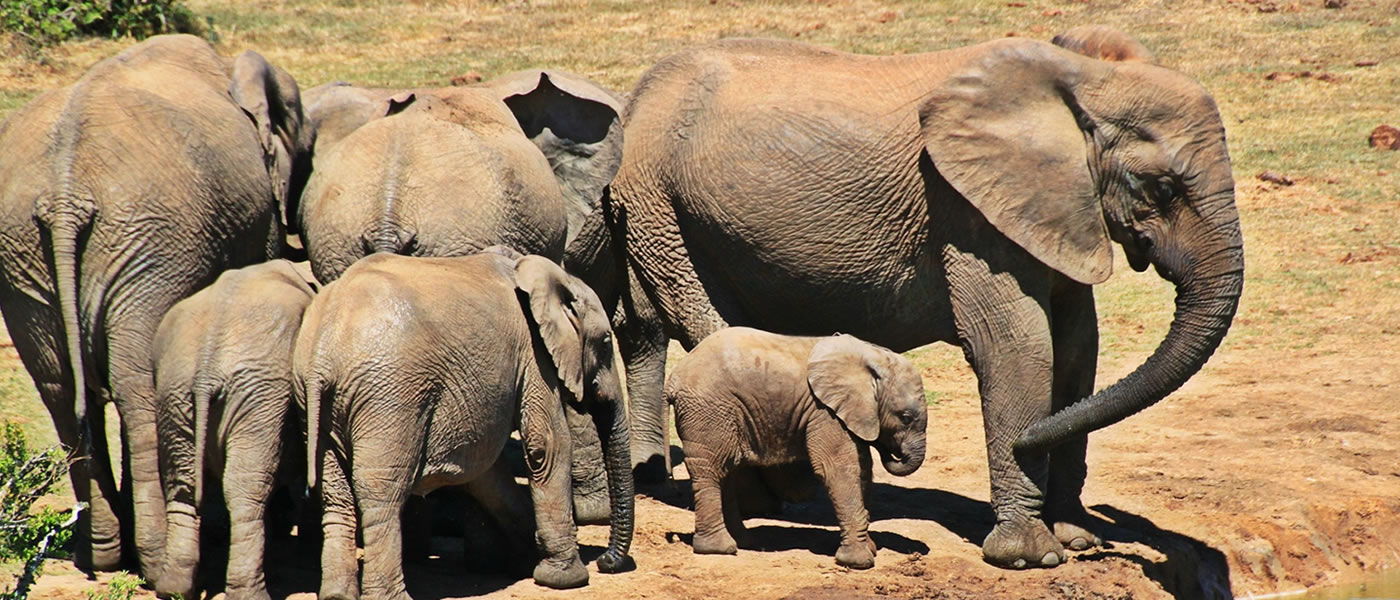
Murchison’s northern bank supports Uganda’s largest elephant population. Herds of 50+ individuals regularly traverse the savanna, creating spectacular viewing opportunities. The Buligi Peninsula and Para areas provide consistent elephant encounters.
Best Locations & Timing:
- Northern Bank Game Drives: Primary elephant habitat
- Dry Season (December-March & June-September): Concentrated populations
- Para Safari Lodge Area: Year-round elephant activity
- Nile River Vicinity: Daily water access patterns
Lions: Delta Pride Recovery
Murchison’s lion population continues recovering from historical challenges. The Buligi area and northern bank support growing prides, with sightings becoming more frequent. Patient visitors often encounter lions during extended game drives.
Best Timing for Lions:
- Early Morning Drives: Active hunting periods
- Buligi Peninsula: Primary lion territory
- Dry Season: Concentrated prey and predator interactions
Buffalo: Massive Herds
Murchison supports some of East Africa’s largest buffalo herds. Aggregations of several hundred individuals create impressive spectacles, particularly during dry season concentrations.
Leopards & Rhinos: Limited Opportunities
Leopard sightings remain extremely rare in Murchison, while rhinos require visits to the separate Ziwa Rhino Sanctuary for guaranteed encounters.
Kidepo Valley National Park: Remote Wilderness
Uganda’s most remote national park offers unique Big Five opportunities in spectacular wilderness settings. The park’s isolation ensures authentic experiences with minimal tourist impact.
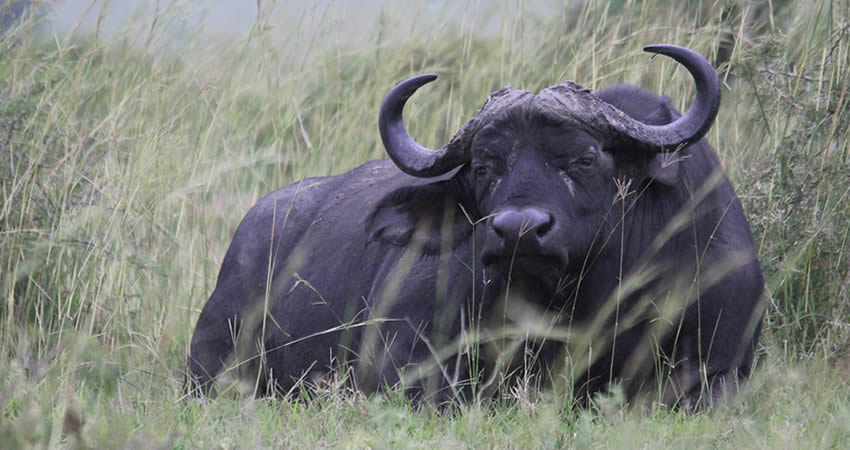
Lions: Narus Valley Pride
Kidepo supports healthy lion populations in the Narus Valley. The open savanna terrain provides excellent viewing opportunities, with lions often visible during daylight hours.
Best Timing:
- Dry Season (September-March): Optimal game viewing
- Narus Valley: Primary lion habitat
- Water Points: Concentrated wildlife activity
Elephants: Seasonal Movements
Elephant populations in Kidepo follow seasonal patterns, with larger concentrations during wet seasons when cross-border movements occur.
Buffalo: Year-Round Presence
Buffalo herds remain present throughout the year, with largest concentrations during peak dry season.
Leopards & Rhinos: Extremely Limited
Leopard encounters remain very rare, while rhinos are absent from the current ecosystem.
Ziwa Rhino Sanctuary: Guaranteed Rhino Encounters
Located between Kampala and Murchison Falls, Ziwa Sanctuary offers Uganda’s only guaranteed rhino sightings. The breeding program successfully maintains a growing white rhino population in a protected environment.
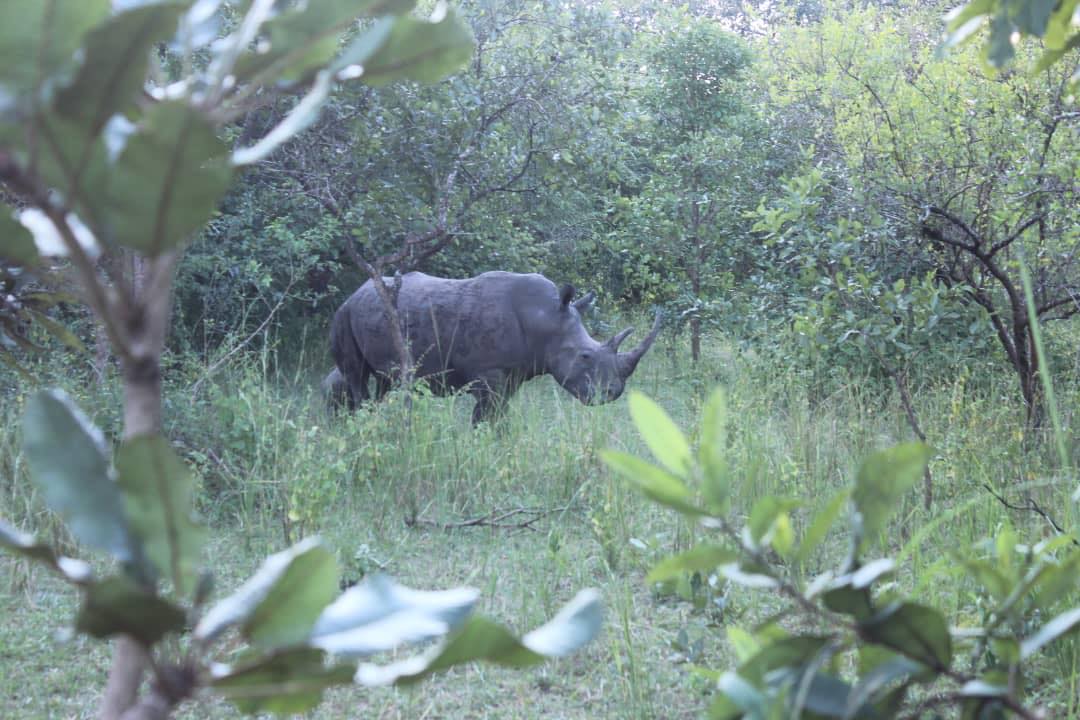
Rhino Viewing Experience
Guided walking safaris provide intimate rhino encounters impossible in traditional game drive settings. The sanctuary’s conservation success story adds educational value to wildlife viewing.
Best Timing:
- Year-Round Availability: Rhinos present daily
- Early Morning (7:00-9:00 AM): Active feeding periods
- Late Afternoon (4:00-6:00 PM): Evening activity
- Cool Weather: More active rhino behavior
Seasonal Timing Strategies
Dry Season Advantages (June-September & December-February)
Wildlife Concentration: Animals gather around permanent water sources, improving sighting reliability Road Accessibility: Better driving conditions for reaching remote areas Vegetation Clarity: Reduced foliage improves wildlife visibility Photography Conditions: Clearer skies and consistent lighting
Wet Season Considerations (March-May & October-November)
Birthing Seasons: Young animals and active predator behavior Lush Landscapes: Dramatic scenery and green backdrops Fewer Crowds: More intimate wildlife experiences Challenging Access: Some remote areas become difficult to reach
Multi-Park Big Five Strategy
Recommended Itinerary Approach
Day 1-3: Queen Elizabeth National Park
- Focus on lions (Ishasha), elephants, and buffalo
- Attempt leopard sightings in Kyambura area
- Kazinga Channel boat safari for diverse wildlife
Day 4: Ziwa Rhino Sanctuary
- Guaranteed rhino encounters
- Educational conservation experience
- Strategic location between parks
Day 5-7: Murchison Falls National Park
- Additional elephant and buffalo opportunities
- Lion sighting attempts in Buligi area
- Nile River experiences and waterfall visits
Optional Extension: Kidepo Valley
- Remote wilderness experience
- Additional lion and elephant opportunities
- Cultural interactions with local communities
Maximizing Big Five Success
Professional Guide Importance
Experienced local guides dramatically increase Big Five encounter success. Their knowledge of animal behavior patterns, seasonal movements, and optimal timing proves invaluable for challenging species like leopards and lions.
Technology and Communication
Modern safari vehicles equipped with radio communication networks allow guides to share wildlife sighting information, increasing encounter probabilities across all Big Five species.
Patience and Realistic Expectations
Complete Big Five encounters in Uganda require patience and multiple park visits. Setting realistic expectations while maintaining enthusiasm creates more satisfying safari experiences.
Photography Considerations
Each Big Five species requires different photographic approaches. Understanding behavior patterns, optimal lighting conditions, and respectful viewing distances enhances both wildlife experiences and photographic success.
Conservation Impact
Choosing Big Five safaris in Uganda directly supports conservation efforts protecting these magnificent species. Tourism revenue funds anti-poaching operations, habitat protection, and community conservation programs essential for long-term wildlife survival.
The success of rhino reintroduction at Ziwa Sanctuary and mountain gorilla conservation demonstrates Uganda’s commitment to wildlife protection. Supporting responsible tourism operators contributes to these ongoing conservation achievements.
Conclusion
Uganda’s Big Five safari opportunities offer unique advantages over traditional safari destinations. The combination of diverse ecosystems, recovering wildlife populations, and fewer tourist crowds creates intimate wildlife encounters impossible in busier parks.
Success requires strategic planning, realistic expectations, and appreciation for Uganda’s conservation achievements. While completing the Big Five checklist may require visits to multiple parks and some patience for elusive species like leopards, the rewards include unforgettable wildlife encounters and meaningful contributions to conservation efforts.
The tree-climbing lions of Ishasha, massive elephant herds of Murchison, and successful rhino breeding at Ziwa represent conservation success stories that make Uganda’s Big Five experiences both thrilling and meaningful. With proper timing, expert guidance, and realistic expectations, Uganda delivers Big Five safari experiences that rival any destination in Africa while supporting crucial conservation efforts for future generations.
Mumwe Safaris Uganda organizes budget-friendly Big Five safaris for all types of travelers, including solo tourists, couples, families and small groups. Contact us now by sending an email to info@mumwesafarisuganda.com or call us now on +256-700135510 to speak with the reservations team.

